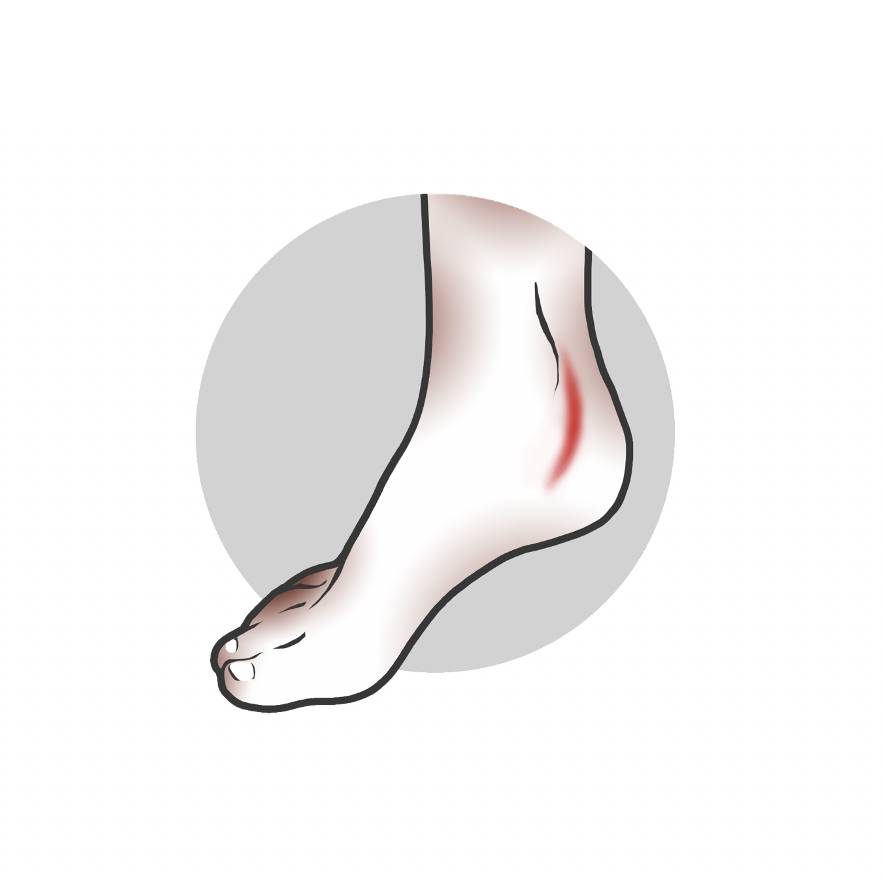
Lähteet tibialis posteriorin toimintahäiriön tekstiin löydät täältä.
Lähteitä
(1.) Kaihan Yao. Yang, Timothy, Xianyi. Yew, Wei, Ping. Posterior tibialis tendon dysfunction: overview of evaluation and management. Orthopedics, 2015 June; 38 (6): 385 – 91.
(2.) Lee M, Vanore J, Thomas J, Cantanzariti A et al.:, Diagnosis and Treatment of Adult Flatfoot. Clinical Practice Guideline. The Journal of Foot & Ankle Surgery. March – April 2005; 44 (2): 78 – 113.
(3.) Bluman E, Title C, Myerson M. Posterior tibial tendon rupture: a refinish classification system. Foot and Ankle Clinics. 2007, Jun, 12 (2), 233 – 249.
(4.) Johnson K, Strom, D. Tibialis posterior tendon dysfunction. Clinical Orthopaedics and Related Research. 1989, Fed (239), 196 – 206.
(5.) Barn R, Turner D, Rafferty D, Sturrock R et al.: Tibialis Posterior Tenosynovitis and Associated Pes Plano Valgus in Rheumatoid Arthritis: Electromyography, Multisegment Foot Kinematics, and Ultrasound Features. Arthritis Care & Research. 2013, Apr, 65 (4), 495 – 502.
(6.) Holmes G, Mann R. Possible Epidemiological Factors Associated with Rupture of the Posterior Tibial Tendon. Foot and ankle International. 1992, February 13, 70 – 79.
(7.) Abousayed, Mostafa, Tartaglione, Jason, Rosenbaum, Andrew & Dipreta, John. Classification in Bried: Johnson and Strom Classification of adult-acquired Flatfoot Deformity. Clinical Orthopaedics and Related Research. 2016, 474: 588 – 593.
(8.) Durrant, B, Chockalingam, N & Hashmi, F. Posterior tibial tendon dysfunction: a review. Journal of American Podiatric Medical Association. 2011;101 (2): 176 – 86.
(9.) Houck J, Neville C, Flemister A. Randomized controlled trial comparing orthosis augmented by either stretching or stretching and strengthening for stage II tibialis posterior tendon dysfunction. Foot & Ankle International 2015. Vol 36 (9): 1006 – 1016.
(10.) Roos, M, Smith, M, Mellor, R & Vicenzine, B. Exercise for posterior tibial tendon dysfunction: a systematic review of randomised clinical trials and clinical guidelines. BMJ Open Sport & Exercise Medicine 2018.
(11.) Nielsen M, Dodson E, Shadrick D, Catanzariti A et al.: Nonoperativie Care for the Treatment of Adult-acquired Flatfoot Deformity. The Journal of Foot & Ankle Surgery. 2011, 50, 311 – 314.
(12.) Khazen, Gabriel & Khazen Cesar. Tendoscopy in stage I posterior tibial tendon dysfunction. The Foot and Ankle Clinics. 2012 September; 17 (3): 399 – 406.
(13.) Alvarez, R. Marini, Schmitt, C & Saltzman, C. Stage I and II posterior tibial tendon dysfunction treated by a structured nonoperative management protocol. Foot and Ankle International, 2006; January, 27 (1): 2 – 8.
(14.) Menz, Hylton. Alternative techniques for the clinical assessment of foot pronation. Journal of the American Podiatric Medical Association. 1998, March, 88 (8), 119 – 129.
(15.) Kulig K, Reischl S, Pomrantz A, Burgfield J et al.: Nonsurgical Management of Posterior Tibial Tendon Dysfunction With Orthoses and Resistive Exercise: A Randomised Controlled Trial. Physical Therapy 2008 December, 89 (1): 26 – 37.
(16.) Augustin J, Lin S, Barbarian W, Johnson J. Nonoperative treatment of adult acquired flat foot with the Arizona brace. Foot and ankle clinics. 2003, Sep, 8 (3), 491 – 502.
(17.) Lin J, Balbas J, Richardson G. Results of non-surgical treatment of stage II posterior tibial tendon dysfunction: A 7 – to 10- Year Followup. Foot & Ankle International. 2008, Sep, 29 (8), 781 – 786.
